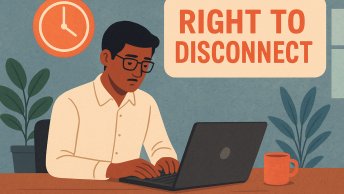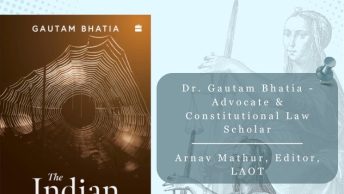I list some of my favourite “lifts” below:
1. The raunchy “Munni Badnam Hui” was copied from a 1992 Pakistani number. Umar Sherif, the original composer says he was more surprised than angry when he came to know of the copy. However, Lalit-ji refuses to acknowledge the copying, making this one painful badnaami that no Zandu balm can cure.
2. “Teri Meri Prem Kahani”, from the latest Salman hit (Bodyguard), is a clear copy of a 15th century Romanian carol, made famous by an angelic rendition by Cleopatra Stratan, when she was all of 6 years old! The music producer, Himesh “nasal” Reshamiyya insists that there is no copying and that this is an original “raag” based melody.
3. Tamally Maak from Egyptian composer Sherif Tag and performed by Amar Diab, a leading Arabic rockstar. This was transformed by the inimitable copy cat, Anu Malik to a murderous “Kaho Na Kaho”.
4. Pehli Nazar Mein (from the movie “Race”) copied from a wonderful Korean song.
My all time favourite however is the Lambada tune made famous by the French band, Kaoma. This appears to have its origins in a Bolivian number and underwent several adaptations before it found its way into the creative consciousness of Jennifer Lopez who used it to hit the dance floor with a certain pit bull. And here again, Bollywood was not far behind: Bappi Lahiri cashed in on this famous tune in a 1990’s Bollywood blockbuster, Ghayal starring Sunny Deol and Meenakshi Seshadri.
For those of you interested in uncovering more lifts, try the fabulous itwofs, a resource created with painstaking effort and diligence.
For the most part, such borrowings (particularly in the music sphere) have not been subject to any legal sanction under India’s copyright norms. However, in a recent decision, the makers of the Malayalam movie, Urumi were restrained from exhibiting the movie (and performing the song in languages other than Malayalam) owing to the fact that one of the key songs in the movie copied the soulful tune of a Canadian celtic singer.
This order may perhaps signal the end of an era of unabashed copying by Pritam, Anu Mallik and the like. However, while such “borrowings” may technically amount to an infringement under India’s copyright laws, we need to ask whether or not we ought to encourage such borrowings. I personally lean in favour of creating some legal space for them, subject to attribution and the payment of royalty in appropriate cases.
In a recent post at SpicyIP, I outline some tentative proposals in this regard:
1. Firstly, music composers ought to be provided an opportunity to check their tunes against previous similar sounding versions. In other words, we need a smart tech savvy person with an interest in music to come up with a product that enables such cross checks. Any such product will certainly not starve for want of a market. For not all copies are conscious copies, and conscientious composers may find themselves at the receiving end, simply because they have no idea that their tune is an unconscious copy or adaptation of something they heard earlier! Perhaps there already exists such a product that I am not aware of?
2. Secondly, my own view is that, irrespective of whether or not the copyright in a tune has expired, every borrowing be acknowledged and attributed. The challenge is to convert this to a specific legal obligation with definite bounds susceptible to easy enforcement. I am reminded of the patents regime, where every patent application has to necessarily disclose prior art that it draws from. Ought we to have a similar obligation to disclose musical borrowings (and make copyright protection contingent upon such disclosure)? Would this be feasible?
3. Thirdly, every composer be free to borrow or lift any copyrighted tune, provided royalties are paid to the original copyright owner. In short, we institute a compulsory licensing scheme! It bears noting that we already have such a scheme for straightforward copies, which go by the name of “version recordings”. A scheme that made T series what it is today.
Section 52(1) (j) provides that anyone is free to reproduce their own version of a copyrighted song (by making it afresh with a new set of performers) after two years of the song being on the market, provided royalties (currently, it is 5% of sales) are paid to the owner of copyright in the song (music and lyrics).
I find it a bit paradoxical that when straightforward copying is encouraged under such a “version recording” scheme, adaptations (which involve more work) are not. This can be rectified with a simple stroke of the legislative pen. However would such a compulsory licensing scheme be desirable?
Should we encourage such copying, particularly where there is some creative adaptation. I find that many a time, it takes a copy to appreciate how much better the original version was. And more importantly, but for such copycats, one may never have discovered the original artist in question. Thanks to Deepak Dev, I found Loreena McKennitt, and have not stopped listening to her ever since. Lastly, as is the case with Urumi’s “Aaro Nee Aaro”, copies are capable of evoking a very different imagery than the original. One may perhaps argue that raw pieces of art or music often have little meaning outside of the cultural context in which they situate themselves.






Wonderful post and excellently researched ! and I knew Bollywood copies but not in this scale !
Shamnad, herein lis the problem with claiming copyright. Munni badnaam hui predates Umar Sharif by 40 years and is an old song found in recordings from the 1930s, u believe the version is Naseeban tere lite. Paromita Voras new film goes through this song amongst others. Given that they haven't really worked out a fair system of royalty to composers, lyricists or singers, I'm not sure what the benefits of creating a more stringent copyrit regime would be
Tks for sharing, this Rohit. Not too surprising…its always possible to track back a modern tune to some inspiration in the past..and even the Bolivian tune in Lambada (taht I mentioned) may have roots in an African beat…..in fact, some have made the argument that almost every song is a remix one way or other….its just the amount of copying that varies from one to the other. the present set of amendments are precisely about guaranteeing a fairer system of royalties–partly borrowing from some European models which appear to have worked. .and in any case the regime of versions (covers) have worked well for India. so am not sure we should write it off so quickly…
Rohit: i dug into Munni a bit more and note that there are several other versions (similar tunes) between Sharif and Munni. However, I'm unable to trace out the version you mention predates Sharif's 1990's number by 40 years. do you have a link etc for this tune? tks
Shamnad, my source was the Paromita Vora film, review below, the first recording was from the 70s by Razia Begum, but even hers was a rendition was an older folk song
http://www.indianexpress.com/news/munni-whos-line-is-it-anyway/798193/0
Tks much Rohit. I will try and get hold of the documentary then.
s
qgm7fr
x9u5en